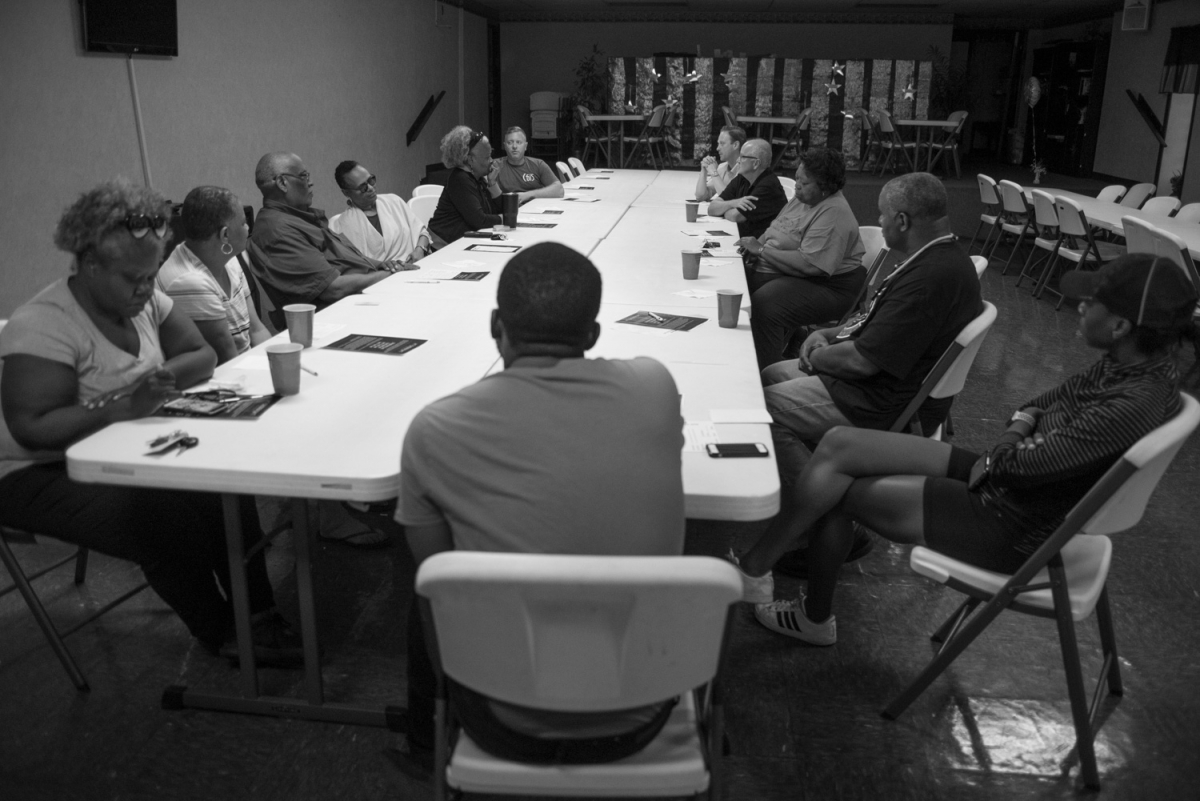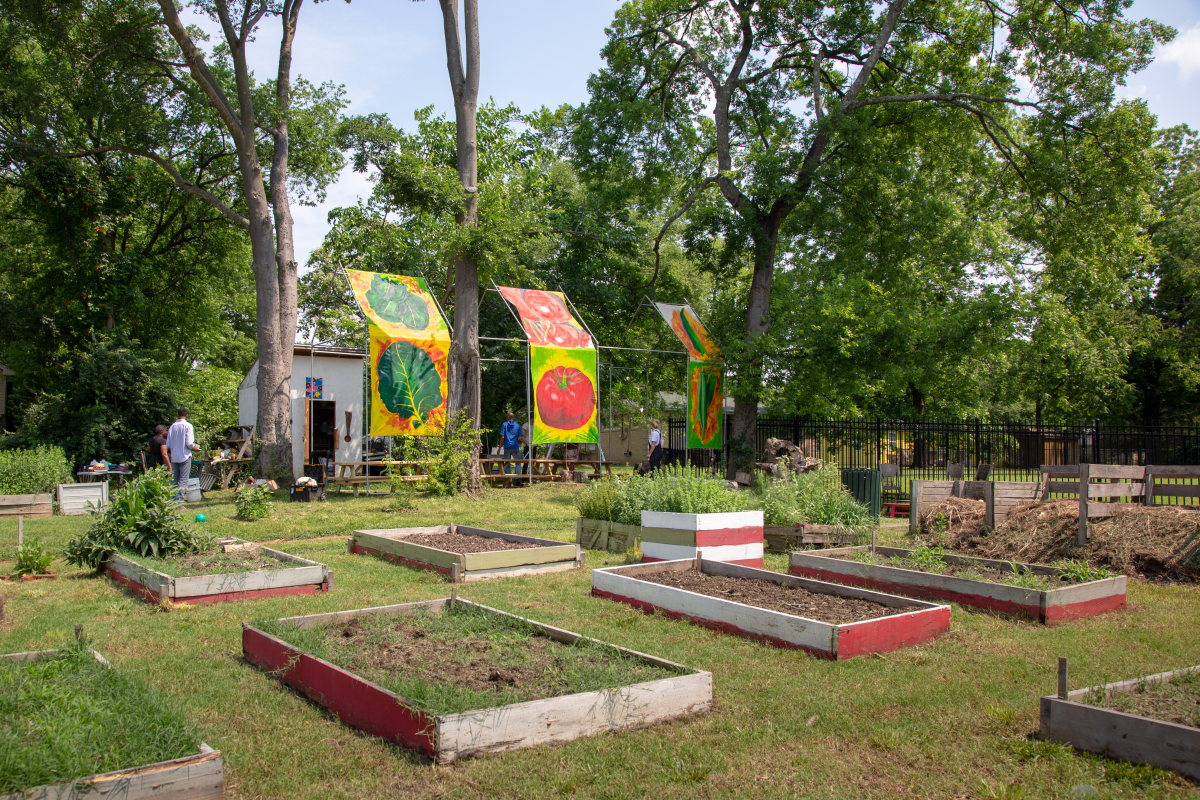Trust the Process: Temporary Exhibition, Permanent Impact
Posted by Aug 13, 2019

Mr. Tré Hardin
Nashville is a city known for the way we engage our community; we’re famous for our southern hospitality, our musical roots, our booming art scene, and enough decent restaurants to satisfy anyone. However, we also are a swiftly growing city with a deep cultural history that is often overshadowed by the more recent trends of rideshare scooters, bachelorette parties, and changing neighborhoods. With the city growing rapidly and the historical narrative of Nashville’s communities in jeopardy, we’ve had to reevaluate our responsibility to our communities’ past, present, and future through the lens of our public art program.
In 2017 Metro Arts released a Public Art Community Investment Plan to alter our overall approach to public art in the city of Nashville. The plan emphasizes the importance of community centered public art and offers a number of recommendations and best practices to implement. One recommendation challenged us to shake up the way we engage with our community by hosting a curated temporary public art exhibition.
As Nashville grapples with the “It City” label, our first temporary public art exhibition was the perfect opportunity to creatively offer a critique of our own city. When we released the national call for curators in late August 2017, we had no idea what this project might look like or what topics it might tackle. Our only real requirement for the project was that at least 25% of the nine artists selected needed to be Nashville based. A panel of local artists and community representatives selected Nicole J. Caruth to curate the exhibition that she would later call Build Better Tables.
Nicole, an award-winning writer and curator, has centered much of her work on the intersection of food systems and community; she wanted to explore the effect that Nashville’s growth and recent displacement has had on food access and health in some communities. She visited Nashville in early 2018 to research the city and start conversations with artists, community members, and organizations across the city that would shape her curatorial vision.
The months leading up to Build Better Tables proved that the process of creating and building relationships is just as, if not more, important than the artwork itself.
During a visit to the Nashville Food Project, a local non-profit committed to providing access to healthy food for everyone, Nicole found a framed art print that would serve as the inspiration for the exhibition’s title, Build Better Tables. The print states: “When you have more than you need, build a longer table, not a higher wall.” The print almost perfectly embodies the challenge Nashville is facing amongst an influx of growth, corporate investment, and displacement. While the city is growing and being penned the “It City,” why are the walls of division growing taller? While new Nashvillians are enjoying the benefits of growth, why are life-long residents seemingly left without a seat at the table?
Guided by these questions, Nicole assembled nine brilliant artists to challenge the current state of Nashville through art, food, history and community. Thaxton Waters’ Sitting at the Welcome Table featured a pop-up art space where Waters prepared history lessons to examine the factors that shaped African-American food ways during four distinct periods. Tunde Wey’s Hot Chicken Sh*t played on the sudden emergence and appropriation of Nashville’s historical Hot Chicken as a trending delicacy by hosting community dinners and challenging local developers to preserve neighborhoods by pledging land and donations to a local land trust.

Juan William Chavez questions food access and food rights through the mobility of his Food Rights Bike. Crystal Z. Campbell’s film Go-Rilla Means War serves as a relic of gentrification, a memory of what once was that highlights parallel narratives across many U.S. cities like Nashville. Tattfoo Tan’s S.O.S. Free Seeds Libraries are placed in community gardens across the city and are providing the public with free seeds for edible plants and flowering cover crops. Otabenga Jones & Associates’ billboard campaign encouraged self-sufficiency and empowerment in maintaining health through optimal food choices.
Conversations with public health officials emphasized the narrative that would inspire a sculptural installation and free cooking classes for expecting and new mothers; due to stress caused by poverty, discrimination, and a lack of access to affordable healthcare, black women and infants have a disproportionately higher mortality rate than any other group in the country. Andrea Chung’s Eeny, meeny, miny, moe was a direct response to this epidemic and critiques the construction of Interstate 40 and the historical impact it has had on the North Nashville community, and more specifically black mothers living in North Nashville. Seitu Jones and NORF Art Collective, both participating artists in Build Better Tables, are now collaboratively working with Metro Arts to install permanent pieces at the Nashville Farmers Market that will be complete later this year.

In total, 755 Nashvillians participated in Build Better Tables programs. National media outlets, such as The Washington Post and Food & Wine magazine took notice. The recent recognition from Americans for the Arts by including the project in the PAN Year in Review encourages our agency to do more projects like this, and working with such talented artists has highlighted the impact that creative collaboration can have on community.
Echoing the remarks of Jeremiah Ellison at this year’s Public Art Preconference, “In creative city making, it’s more about the creative process than the final product.” The months leading up to Build Better Tables proved that the process of creating and building relationships is just as, if not more, important than the artwork itself. Meetings and discussions with community partners allowed artists to unpack the historical events that have shaped the city’s current socioeconomic climate. During the process, artists forged new relationships and cultivated partnerships that continue to influence our community. Together, we were able to bring Nashville a variety of creative experiences that connect historical context and challenge today’s narrative.
This post is part of The “Public” In Public Art: Community Engagement Stories From The 2019 PAN Year In Review blog salon.





